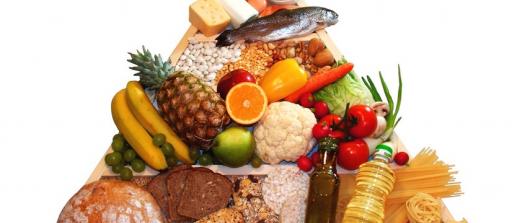Olive Farming
Olive trees are farmed in a number of countries in the region surrounding the Mediterranean sea, both in Europe, Asia (e.g. Turkey) and North Africa. However, 93% of olive production comes from Greece, Spain and Italy and is a highly important crop for these countries. For example 60% of the Greek land is used for olive tree cultivation. The latin term of the olive tree is Olea Europaea and there is a large number of olive tree cultivars, producing oils whose flavors differ, but only slightly.
Cultivation of the Olive Tree
Careful cultivation by olive producers enables the olive tree to yield the greatest and best possible amounts of olives and olive oil. The tree flowers in the spring, and in autumn the fruit ripens and the harvest begins. The olives are harvested with care, to avoid them being "injured" and the quality of their oil diminished, and they are taken straight to the press. In Greece and most other olive-producing countries, harvesting methods have remained unchanged throughout the centuries: beating the branches or harvesting the fruit by hand.
The Olive Harvest
In European Mediterranean countries the olive oil harvest begins in November and can last until December but sometimes may go on to January or even February. At the beginning of the season the olives are green and at their most ‘peppery’ flavor. They get darker in color as they ripen further and their flavor mellows. For most connoisseurs green olives make the best, most pungent oil with strong grassy, vegetable flavors but good oils made with black olives can be found too. To make the best extra virgin olive oil, the olives are harvested by hand. Large nets are spread under the tree, and then the farmers use sticks to shake the ripe olives from the trees. Sometimes you will see the workers up in the tree itself, removing every last one. The least damage to the olive during harvest, the better the oil. Bruising or heat will raise the acidity in the olive fruit, and spoil the flavor of the oil.
Collection and Transportation
The olives are collected in sacks. Hessian is used so the crop can ‘breathe’ and stay cool as it is transported to the olive press (the plant where the oil is made). Ideally, the press will be close to the olive grove because the best extra virgin olive oil is made within just a few hours of picking. The olives are finally taken to the mill where they may be stored for a while to allow them to heat up a little and helping release the oil from the crushed fruit. However, the storing should be no longer than a day or so. The olives are then washed to remove leaves, twigs or earth, and crushed to produce a homogenous mixture from which the liquid can be extracted. The paste obtained by crushing the olives is kneaded mechanically to help the amalgamation of the minute droplets of oil found in the pulp. This resulting mixture is a combination of liquid (oil and water) and solids (pulp and stones). Then the oil is extracted either by the traditional method (mechanical pressure) or by the continuous method where extraction is entirely by centrifuge. Here the paste is spun at high speed to separate the flesh from the oil. Both methods are equally good. When the oil has been separated from the water, the first cold pressed virgin olive oil is left, which is a totally pure product because it is untreated. Cold pressed means that the temperature during the oil extraction process has been controlled not to exceed 27o C. No other vegetable oil is edible just by being pressed. All other oils have to be treated first because they contain toxins or are not suitable for human consumption in their natural state. The phase of collection and trasportation is a very busy time for the producing countries. You will see the streets leading to a press lined with waiting sacks from neighbouring farms. Trucks pass busily back and forth to the groves. It is a time for ‘all hands to the pump;’ everyone is involved – men, women, school age children. Festivals follow the harvest to celebrate the safe gathering of this valuable asset.
Oil Extraction
The ripe olives are taken immediately to the press, where the fruit is turned into pulp by traditional methods or by using modern technology. Using only mechanical means, the natural juice of the olive is extracted from the pulp; the olive oil is then filtered and stored in suitable stainless steel tanks.
Packing process - Packaging
The olive oil is transferred from the olive press to packing plants, where olive oil destined for supermarket shelves and the end consumer is packaged under strict hygiene and safety procedures, as prescribed by European Union legislation. The Greek olive oil packing industry uses modern facilities and guarantees the quality and safety of the product through rigorous application of the specifications of European legislation and of the principles of HACCP. With continuous quality checks on the raw material as well as on the finished product, it supplies the market with a high-quality fresh product on a daily basis, thanks to small packing u΄7/nits, proper storage and rapid consumption. The majority of Greek packing plants have modern quality control laboratories at their disposal, with the additional capacity to analyse the 28 mandatory physicochemical parameters relating to the quality and authenticity of the raw material. At the same time, a growing number of companies are being certified according to ISO for their production processes, but also for other parameters (e.g. environmental protection, etc.).
Source: http://greatevoo.gr






